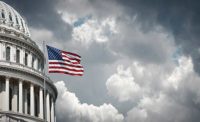As the 118th Congress started off with a clear partisan divide last January, our industry has faced unprecedented regulatory challenges in the second half of the year.
From labor to liability and product standards, the Biden administration has clearly shifted its strategy from legislation to regulation. As a result, ASA has been working diligently to take swift action on several regulatory decisions over the last few months. Areas of note include:
DOE Residential Water Heater Standards: In late July, the Department of Energy issued a Notice of Proposed Regulation (NOPR) for residential water heaters. This proposed action would significantly re-shape residential water heater manufacturing for decades to come. While the proposed rule does not eliminate gas water heaters, it does increase their required efficiency, along with mandating that they use condensing (vs. non-condensing) technology and affects tank and tankless water heaters alike.
From the moment the NOPR was published, ASA was engaged with stakeholders throughout the industry to formulate an appropriate response. As a result, ASA filed comments with the Department of Energy to express deep concerns with the proposed rule concerning restricting consumer choice, increasing costs, expanding regulatory compliance, and the overall impact on demand and inventory planning. Overtime Rule: After being updated in 2019, the Department of Labor issued a new NOPR regarding executive, administrative and professional overtime pay requirements in September. Previously, this rule had only been updated every 10 years, making this proposal an unprecedented and early revision to a rule that would have wide reaching effects on our industry. In addition to increasing the minimum salary for “exempt” workers by nearly 70% (from $35,568 to $60,209 annually), this action would potentially create an overly burdensome tracking requirement for employers, create income disparities in different regions, cause workers to be reclassified from exempt to hourly employees, and further contribute to inflation. ASA joined its industry and coalition partners to file comments opposing this expansion and to review its decision again.
Joint Employer Rule: In late October, the National Labor Relations Board released its final rule on joint-employer status. This is a wide-reaching decision that cuts across multiple industries and will change the dynamic with contract employees for years to come. The rule broadens the circumstances under which a company can be considered a “joint employer,” considerably increasing exposure to liability, labor scarcity and reducing wage growth. Again, ASA filed comments to not only oppose this action, but has also encouraged Congress to pass legislation to nullify the rule though the Congressional Review Act (CRA). On Nov. 16, the effective date of the rule had been extended to Feb. 26, 2024, to accommodate legal challenges.
Walkaround Rule: ASA also joined its coalition partners by filing comments in opposition to OSHA’s Walkaround Rule, allowing non-employee representatives to accompany OSHA workplace safety officers during their inspections. In addition, the comments cite that the rule fails to include guardrails to prevent the use of the OSHA inspection process for personal benefit and guidance for CSHOs with respect to determining a qualified “authorized representative.” The comments also explain that the rule goes against employee free choice by imposing third-party representation in workplaces that may have rejected union representation.
With Democrats in control of the White House and Senate, along with a Republican majority in the House of Representatives until January 2025, next year will continue to see robust regulatory activity from the Biden Administration and ASA will remain active in protecting the PHCP/PVF industry.




